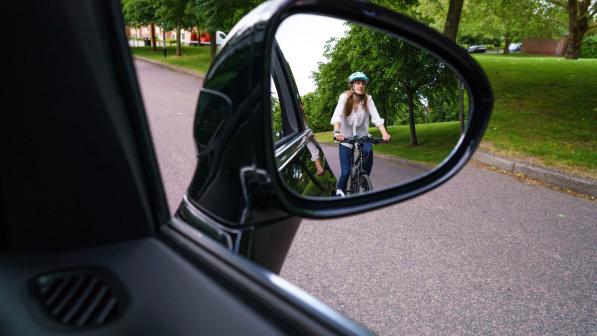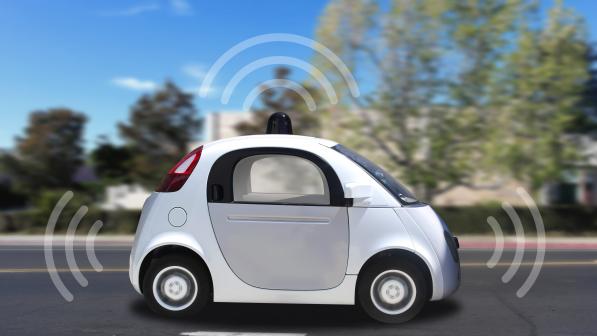Driverless taxis in London must be bike safe

According to reports, robotaxis will be hitting the streets of London in 2026, but huge questions remain about their safety, especially for people riding bikes.
Waymo is proposing to bring its peculiar-looking cars, laden with cameras and sensors, to London and hold a trial of the fully autonomous ride-hailing service in the capital.
In 2024 we lobbied for safety amendments in the Automated Vehicles Bill and last month we responded to a detailed consultation from the Department of Transport on autonomous vehicles (AVs) where we outlined our concerns and recommendations for safety.
It was something of a surprise, therefore, to hear the news on the radio about Waymo’s plans.
Addressing safety fears
AVs have a safety advantage as they are always alert and aware: they don’t get tired or distracted by passengers, satnav or phones. They also don’t break the speed limit.
Cutting out driver error, which causes many collisions, is a key advantage of the technology. However, there have been worrying reports of Waymo cars in the USA performing illegal U turns and stalling in the middle of the road.
AVs could bring overall improvements to road safety because they make car occupants safer. The big worry, though, is whether they make other road users safer too: people walking, cycling or scooting.
Any new regulations must ensure that driverless cars result in improved safety for all road users, not just those in cars.
One of the key tests must be whether AVs detect, recognise and predict the behaviours of people on foot or on a bike – every time – and react in a safe way.
For example, how will the technology respond when a child runs into the road, a bike rider swerves to avoid a pothole, or when a disabled person is riding a handcycle?
Waymo is keen to stress its cars are safe for vulnerable road users – producing videos to explain how and allay fears.
It also points to, albeit limited, research which shows that its cars are far safer for pedestrians and cyclists than cars driven by humans.
More independent research is needed. It is critical that AV operators can demonstrate that their cars can mix safely with all road users in each location before being allowed onto streets used by people walking, wheeling and cycling.
Waymo’s proposed trial in London must not be a chance to learn from mistakes – there must be no mistakes, from day one.
Setting safety levels
The law, set out in the Automated Vehicles Bill, says that AVs must ‘achieve a level of safety equivalent to, or higher than, that of careful and competent human drivers’.
But what is a competent driver, is this too low a bar, and how do we measure competency? That’s what government was asking in its recent consultation.
I like to think I’m a competent driver after decades of experience behind the wheel, but I also admit to making mistakes and having lapses of concentration.
One definition the UK government should apply is for AV technology to display a level of driving which would pass a driving test with no faults, even minor ones.
However, careful and competent drivers follow Highway Code rules but go further, for example, driving under the speed limit near a school or because the road is wet.
They also prioritise the safety of vulnerable road users, for example being ready to stop when a pedestrian crosses the road, even if the pedestrian doesn’t have right of way.

Driverless cars need to be better than even the safest drivers, all the time, and a phased approach is needed to carefully test the competency of the driverless technology.
Waymo is ahead of the game in that its cars and computer wizardry have already been developed and tested with passengers in the USA.
Before the driverless taxis are let loose on London there would be a phased approach to their testing, starting with getting the technology familiar with London’s road layout, traffic lights, road markings, Lime bikes and all the other things we are used to on British streets.
There will also be a phase where an ‘operator’ sits in the Waymo car to override the car if needed as it is tested, learns and collects data for regulators.
Robotaxis in a better transport system
What if AVs are proven to be safe in London and are widely adopted elsewhere in the UK – would this be good for society?
Imagine a world where instead of hailing a taxi or an Uber it would be commonplace to call up a driverless taxi for shopping, going to a gig or getting home from the doctor’s surgery.
You might say I’ve watched too many futuristic films but there could come a time when most of the cars zipping about our cities and towns are driverless electric AVs, constantly ferrying people around.
This would cut the need for car ownership – especially second cars – while producing fewer emissions than now.
Why would anyone own and pay for the upkeep of a car, which most of the time sits unused in a driveway or parking space (like mine does), when you can just pay for the journeys you take in a driverless AV?

It would free up space on the roads – especially parking spaces which could be converted into bike parking and cycle lanes.
Driverless taxis should never replace the role of buses, trams and trains for moving large numbers of people efficiently, nor the humble bicycle as a healthy way to get around.
However, they could replace many car journeys and could have a valuable place in the transport systems of the future.
Tomorrow’s world
Driverless taxis may feel like tomorrow’s world is getting nearer – although, Waymo has many hoops to jump through before it gets the all clear in London and it’s far from certain that driverless taxis will be available for hire from next year.
It’s government’s responsibility to prevent technology companies transforming the future before laws and safety regulations can ensure the new technology makes our roads much safer than they are now – not just safe enough.
We don’t just need better road safety; we need significantly better road safety.
Even though AVs and driverless taxis are cars and look like cars, the technology must be developed to a much higher safety and efficiency standard than the cars of today.
It’s not science fiction to want transport systems that are safe and highly efficient in moving people to where they need to go.


